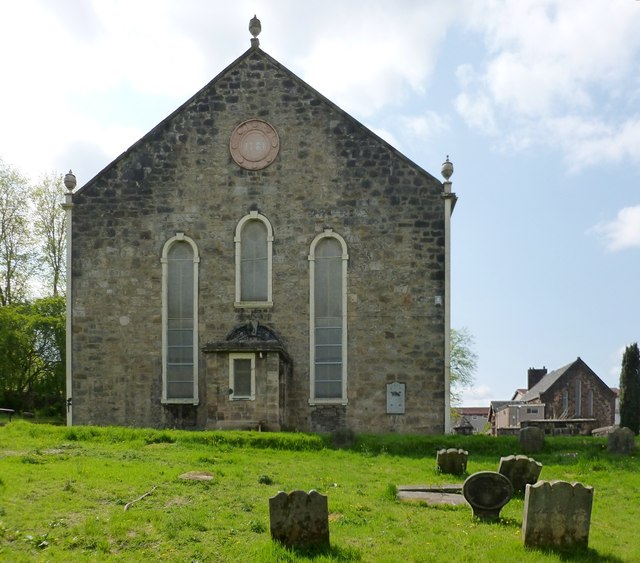 |
| West Relief Church Paisley now Castlehead Church |
Think of Paisley and you will probably think of the Paisley Pattern or the wondrous football team and league cup winners, St Mirren. You make think of the Abbey or the fantastic view from the Car Park in the Sky. Maybe you know Paisley quite well and you are aware of the poverty and deprivation in some schemes. You may also be aware of the political mismanagement of the District which has allowed a once proud Town to be viewed as a suburb of Glasgow.
But scratch beneath the surface and you will see that Paisley’s vibrant and radical history seeps though each street in the Town.
In the early 19th Century, life was harsh for the average Paisley buddie. Between 1800 and 1808 the average earnings for weavers had halved. This continued until 1814 when local weavers successfully petitioned a local magistrate for higher earnings. The Employees ignore the orders of the magistrate and, left with no other alternative, the weavers went on strike for nine weeks with the support of the National Committee of Scottish Union Society.
By 1816, vast swathes of working class Scots had be Radicalised by the continuing harsh conditions that were initially justified by the Napolenic war and the ‘uncaring’ and ‘unrepresentative’ Tory government which brought in laws such as the new Corn Laws, which resulted in food price remaining expensive.
It was in September 1816 that the first ever Scottish Radical public meeting took place at the West Relief Church in the area of Paisley that is now Castlehead. Following that, over 40,000 working class Scots attended a Radical meeting in Glasgow Green demanding the end of the Corn Laws and a more representative Parliament.
Countless Radical meetings cropped up all across Great Britain, looking across the Channel towards the French Revolution for inspiration.
In 1819, eleven peaceful Radical protesters were killed by British militia in what was known as the Peterloomass massacre.
Residents of Paisley showed their support with their Mancunian brethren by holding a meeting in the south side of Paisley at Meikleriggs Moor. After the meeting the Radicals ignored Magistrates orders by marching into Paisley. The police tried to intervene and stop the march. The subsequent serious rioting lasted a week.
In 1820, the Tory government in London implemented legislation that banned Radical public meeting with troops being dispatched to Paisley to resist the ‘revolutionaries’.
When news of the legislation reached Paisley, residents took up arms for political reform. British militia found a weapons cache in Kilbarchan while there were reports of a Scottish Army marching in the streets of Glasgow.
In one incident when British militia was searching for weapons in Foxbar, a gun battle ensued between residents of Foxbar Home and those searching for weapons. Sadly a “young lad of the name of Cochran was shot through the heart” by British Militia and died.
On the 1st of April, the Committee for Forming a Provisional Government called for an immediate general strike.
By the 3rd of April over sixty thousand weavers in Scotland were on strike and the British Government had moved seven regiments into Glasgow. There were reports of skirmishes between 300 Radicals and parts of the Calvary but no one was injured.
A band of Radicals, led by Andrew Hardy, marched from Glasgow to Carron Ironworks after being informed that there were weapons there which were ready to be collected. At Condorrat the met up with fellow Radicals led by John Baird. They continued their march until the 5th of April when, at Bonnymuir, they encountered British troops and a short battled ensued. The Radicals were rounded up and arrested.
On the same day, the experienced Radical John Wilson and other Radicals marched to Strathaven. Once there, they were identified and arrested.
On the 8th of April British militia transported prisoners from Paisley to Greenock Jail. They encountered trouble from locals but managed to transport their prisoners as planned. On their return journey the militia were taunted by locals and retaliated by opening fire, killing an eight year old boy and injuring eleven. Enraged, Greenock residents stormed Greenock Jail and released all the prisoners.
Eventually the uprising was quelled and a total of 88 men were charged with treason.
John Wilson was beheaded in Stirling in front of a crowd of 20,000 on the 4th August.
Andrew Hardy and John Baird were hanged then beheaded on the 8th September.
It was later revealed that British Agent Provocateur were in operation within the Radical movement, agitating the movement so that Radical Leaders could be easily identified.
The Radical Heart of Paisley still beats. The 1820 Society ensures that the memory of John Wilson, John Baird and Andrew Hardy will never be forgotten and the hope of a fairer Scotland beats within every Paisley buddie’s heart.


No comments:
Post a Comment